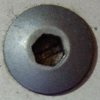Hero999
Banned
I don't need the full service manual although it would be nice.
All I'm after is the user manual or at least a general specification. I would like to know the bandwidth, power consumption, slew rate, maximum input voltage etc. and any features I haven't yet managed to figure out.
It also needs calibrating so I'd like to know how to do that.
Thanks in advance.
All I'm after is the user manual or at least a general specification. I would like to know the bandwidth, power consumption, slew rate, maximum input voltage etc. and any features I haven't yet managed to figure out.
It also needs calibrating so I'd like to know how to do that.
Thanks in advance.
Last edited:











